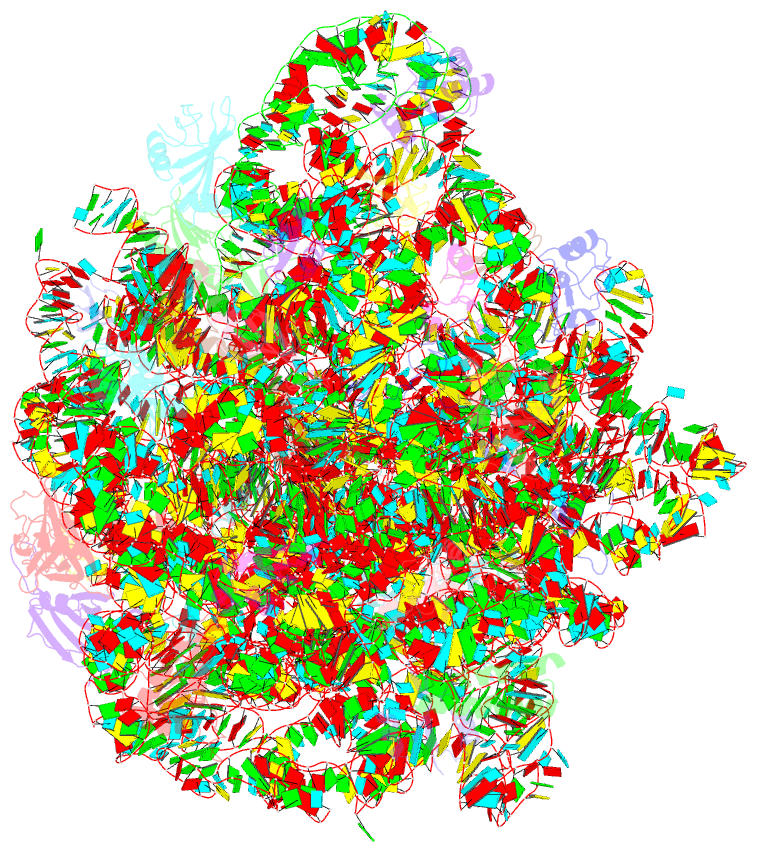Summary information and primary citation
- PDB-id
- 6ddg; SNAP-derived features in text and JSON formats;
DNAproDB
- Class
- ribosome-antibiotic
- Method
- cryo-EM (3.1 Å)
- Summary
- Structure of the 50s ribosomal subunit from methicillin resistant staphylococcus aureus in complex with the oxazolidinone antibiotic lzd-6
- Reference
- Belousoff MJ, Venugopal H, Wright A, Seoner S, Stuart I, Stubenrauch C, Bamert RS, Lupton DW, Lithgow T (2019): "cryoEM-Guided Development of Antibiotics for Drug-Resistant Bacteria." ChemMedChem, 14, 527-531. doi: 10.1002/cmdc.201900042.
- Abstract
- While the ribosome is a common target for antibiotics, challenges with crystallography can impede the development of new bioactives using structure-based drug design approaches. In this study we exploit common structural features present in linezolid-resistant forms of both methicillin-resistant Staphylococcus aureus (MRSA) and vancomycin-resistant Enterococcus (VRE) to redesign the antibiotic. Enabled by rapid and facile cryoEM structures, this process has identified (S)-2,2-dichloro-N-((3-(3-fluoro-4-morpholinophenyl)-2-oxooxazolidin-5-yl)methyl)acetamide (LZD-5) and (S)-2-chloro-N-((3-(3-fluoro-4-morpholinophenyl)-2-oxooxazolidin-5-yl)methyl) acetamide (LZD-6), which inhibit the ribosomal function and growth of linezolid-resistant MRSA and VRE. The strategy discussed highlights the potential for cryoEM to facilitate the development of novel bioactive materials.





